New Developments, Radiological Diagnostics and Therapy
Deep X-ray therapy at the University Women’s Clinic in Frankfurt am Main [Art. 2, Fig. 4] (bpk / Dr. Paul Wolff) (bpk 20006546)
“Medical applications of X-rays and radium rays, whether for diagnostic or therapeutic purposes, is an area that has gained importance in recent years with advancing research and technology,” claimed the Reich Health Office in 1934, noting that cooperation with the state was essential in university and industrial research, along with support from scientific societies.
The development of portable devices for X-ray diagnostics, which resulted in complete products from several companies during the National Socialist period, is one example of this kind of successful cooperation.
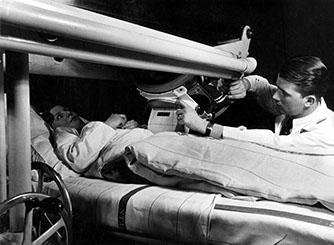
Menu
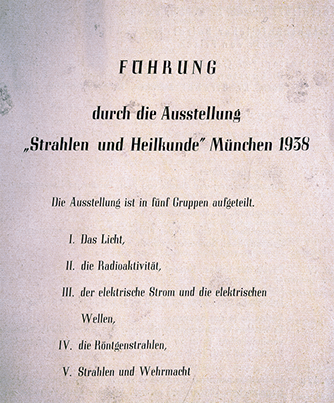
From Wörle, Andreas (ed.), “Strahlen und Heilkunde“ exhibition, Munich 1938, 2 July – 17 August 1938 in Exhibition Park, Munich
The new mobile technology could be used in several different ways: for prophylactic X-ray screening for tuberculosis using imaging devices, for military applications such as locating shrapnel in a patient’s body in mobile field hospitals, and also for normal hospital operations, enabling for instance a patient to undergo an X-ray examination in bed.
Radiological therapy became successfully established for cancer treatment, alongside surgical therapy, in the first three decades of the twentieth century.
This field exhibited vibrant dynamism in terms of experimental research and its transfer into practical therapeutic applications that benefited tremendously from the convergence of medical physics and clinical medicine.
In 1933, Henri Chaoul developed the short-distance irradiation method of moving-beam therapy, which was introduced in 1937 and was based on the work of Friedrich Dessauer, René du Mesnil de Rochemont, and Albert Kohler. The possibility of successfully deploying deep X-ray therapy is almost inconceivable without the close cooperation of physicians (Carl Joseph Gauss, Hermann Holthusen, Hans Holfelder) and physicists such as Walter Friedrich and Richard Glocker
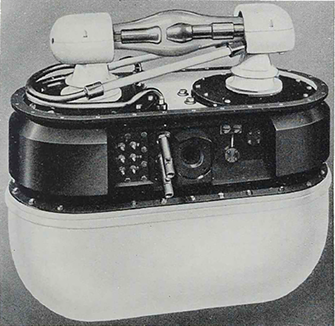
X-ray bomb
(Gund, Konrad: Über eine Hochleistungsbestrahlungsanlage mit kleinstem Raumbedarf, in: Strahlentherapie 66 (1939), pp. 314-319, p. 319)
Konrad Gund, known as the early inventor of betatron technology, had developed what was called the ‘Siemens X-ray bomb’ in Erlangen. When this machine was introduced to the specialist community in 1939, it was the most modern medical therapy device of its time. The use of the ‘X-ray bomb’ was not limited to medical therapy; it was also used in Auschwitz for experiments in radiological castration, conducted over several months on hundreds of prisoners.
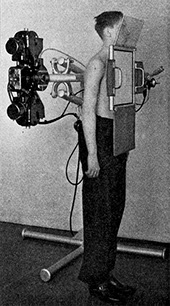
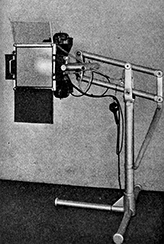
“Perfex 40” transportable X-ray machine (Griesbach, Rolf: Die Tuberkulosebekämpfung. Grundlagen und Wege zu einer einheitlichen und erfolgreichen Durchführung, Leipzig 1941, p. 235, Fig. 21)